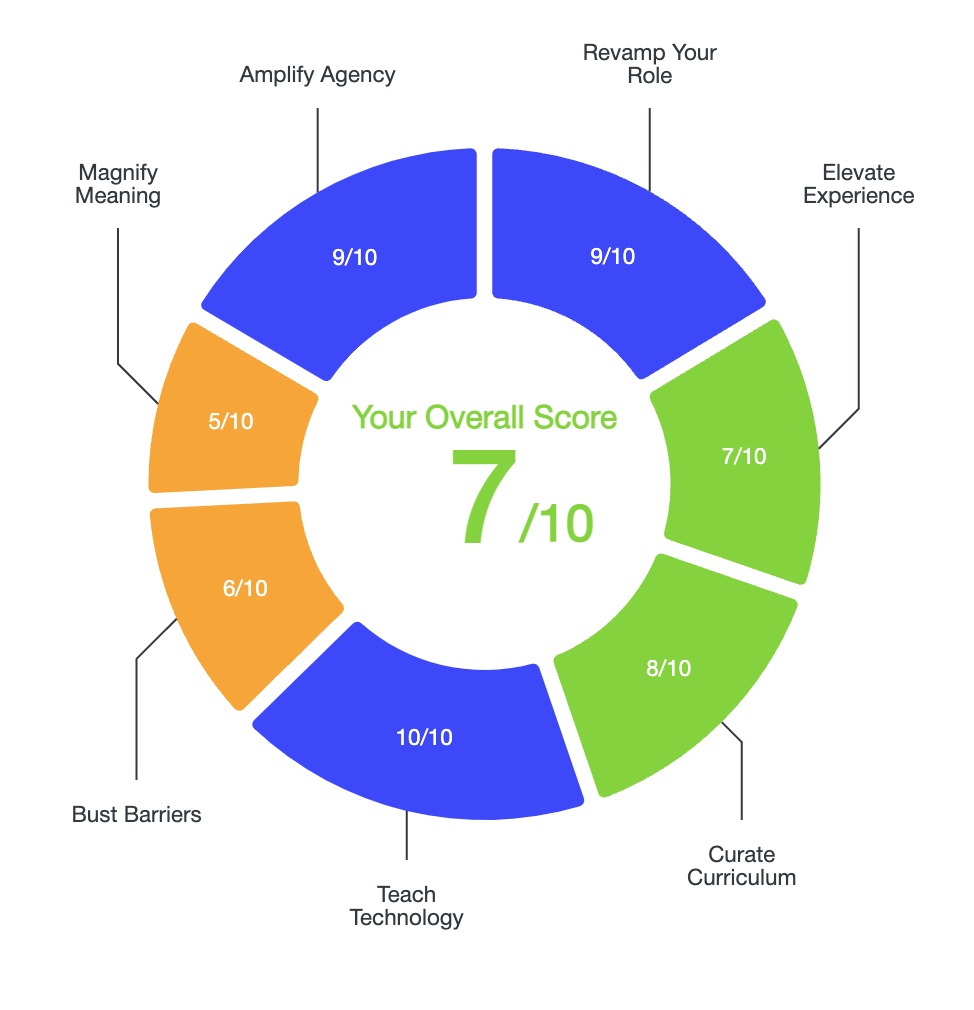Padlet is one of the first tools that got me really excited about how I could use technology to enhance my teaching. Although mostly known as a digital bulletin board, in reality it’s so much more. Whether it’s Padlet for quick check-ins, small group discussions, podcasting, or drawing responses to math problems, I pretty much guarantee you’ll be surprised by the wide variety of ways you can use it!
Do You Need the Paid Version of Padlet?
One question that comes up a lot about Padlet is how to use the free version. If you have a lot of different classes, admittedly the strategies that I’m going to show in this video will be more challenging if you’re only using the free version, though one way to get around that is to have students create their own account because then they’ll also get three boards that they can use as well. But if you plan to use it all the time as your go to workspace you may want to consider buying the premium version.
#1: No Words Challenge in Padlet
The first strategy is to set up what I call a No Words Challenge for students. For this strategy, I like to use the Wall Board option.
The basic idea with the No Words Challenge is that students respond to prompts using media types other than text. The idea here is to get them thinking creatively about how to respond to a question, and it also helps them practice using some of the different multimedia tools that are available in Padlet.
As an example, let’s say that you taught a lesson about the different parts of the cell, and want students to show what they’ve learned. One possibility for a No Words post would be for students to find an image of a cell and then post an image to the board. And another option would be for students to use the drawing tool and then they can sketch out some of the different parts of a cell that they had learned about.
You can use this No Words challenge for a lot of different types of prompts and it’s a fun way to mix up the way that you use this tool.
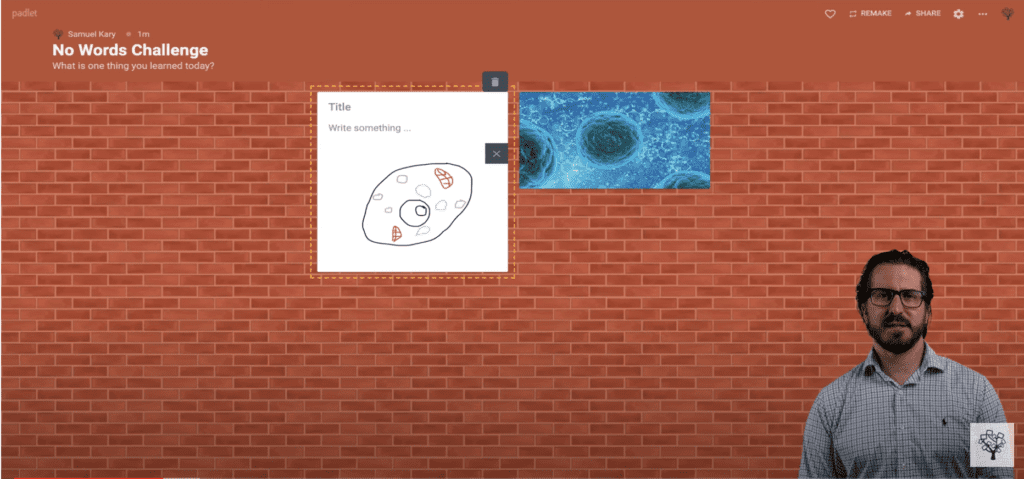
#2: Small Group Discussions in Padlet
For this activity, it would be ideal to split up your class into four different groups – I’ll explain why in a moment. In order to create four Padlet boards at the same time, you’ll either need a premium account, or you could have students create their own board then share it with you and their group mates.
First, you’ll want to set up a single post with a prompt that students would need to discuss. For example, you could write a prompt for students to discuss whether or not cell phones should be allowed in schools. Then, you could use the search function to find a relevant video so that students can watch it and base their discussion on that piece of media.
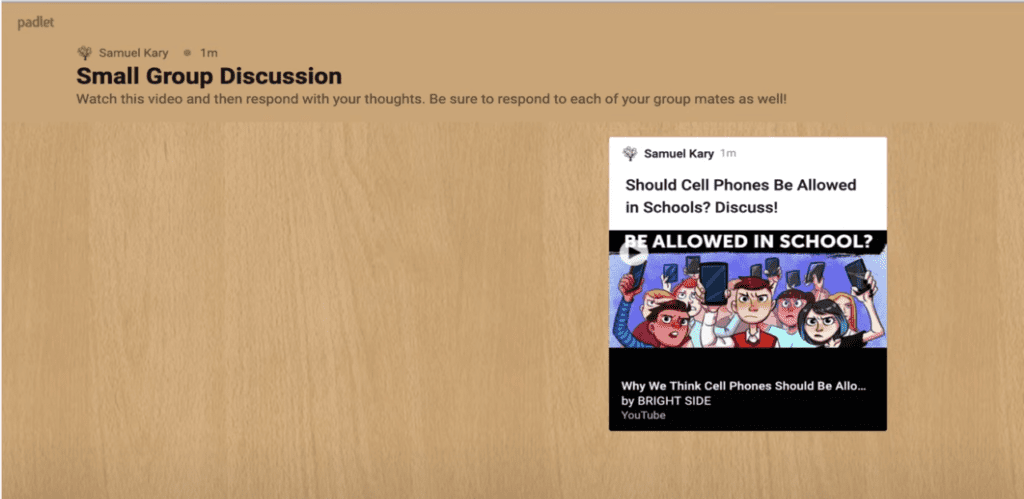
Once you have the board set up for a discussion, you’ll want to make copies of it for your different groups. To do this, go up to the three dot menu and scroll down to “Remake.” Select the box to “copy all the posts currently on this board” so that it creates an exact replica and then repeat this process three times so that you end up with four separate boards (or more depending on how many groups you have).

Then you’ll need to assign students a particular group and share the board with the students that are in that group.
In the case that you’re running this as a live lesson, you might want to be able to monitor all the boards at once. To do this, you can use the Tab Resize Google Chrome extension which will allow you to create a grid of four different tabs so that you can monitor each Padlet room at exactly the same time. Now as students start adding to their group’s Padlet, you’ll be able to observe all their posts as they’re coming in live.
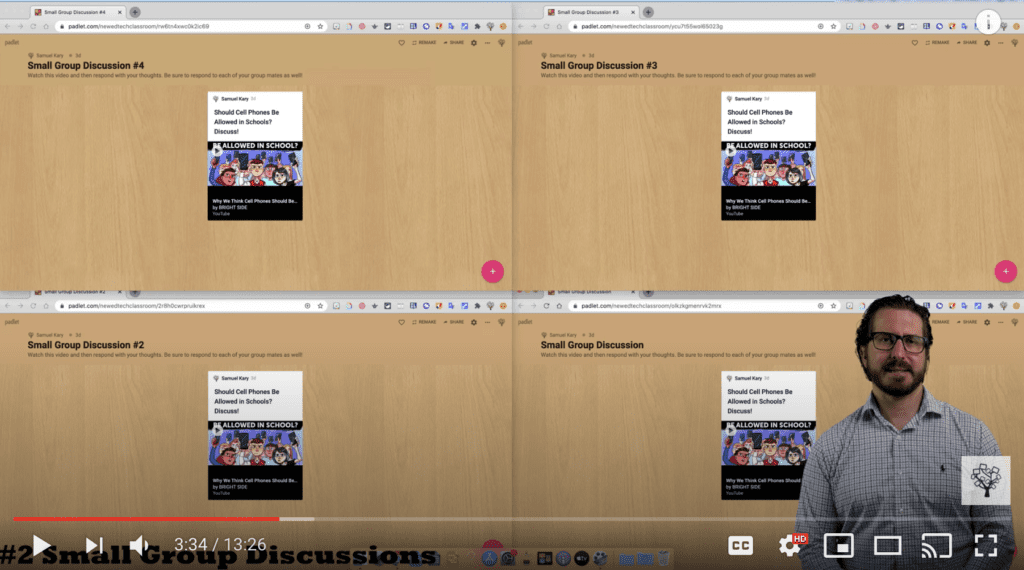
#3: Mind Mapping in Padlet
To make a mind map you’ll want to select the Canvas board in Padlet.
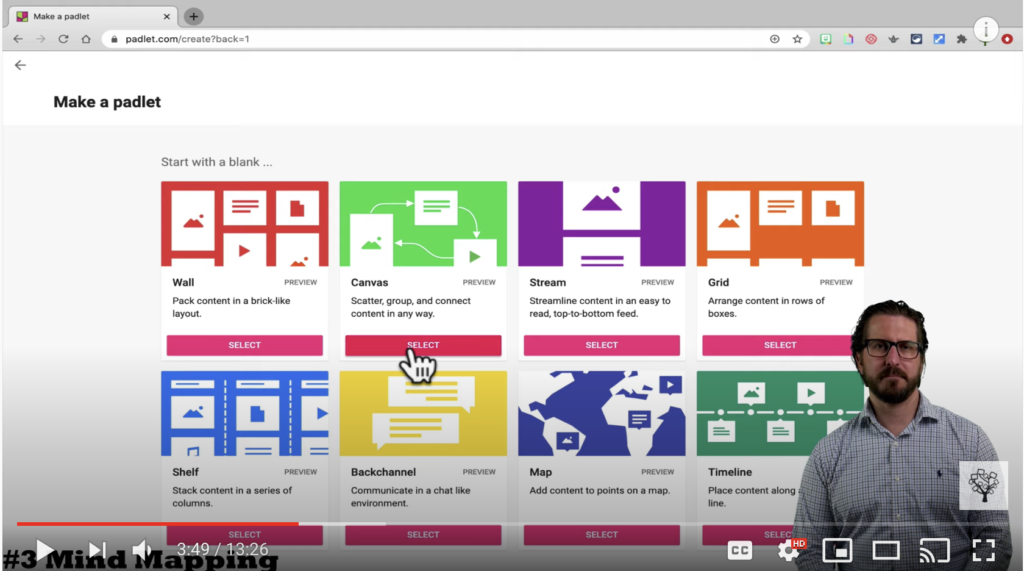
Let’s say you just wrapped up your discussion about whether or not cell phones should be allowed in schools. You could start your mind map by creating a post with that question: “Should Cell Phones be Allowed in Schools?”
In the Canvas board, you can move posts around wherever you want them to go on the board, so you could place it in the middle to represent the center of your mind map.
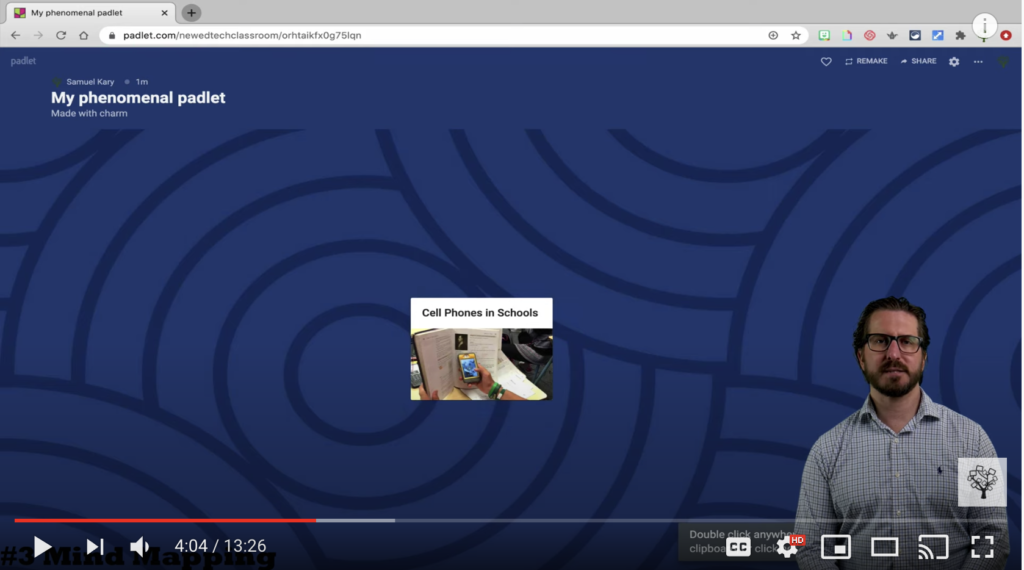
Then students could jump into the board and start adding their own posts with arguments for and against your discussion question. Once those posts have been created, they can also be dragged around anywhere on the board. Then, by clicking on the drop-down menu, students can choose to connect posts to one another, so students can connect their pieces of evidence back to the main argument.
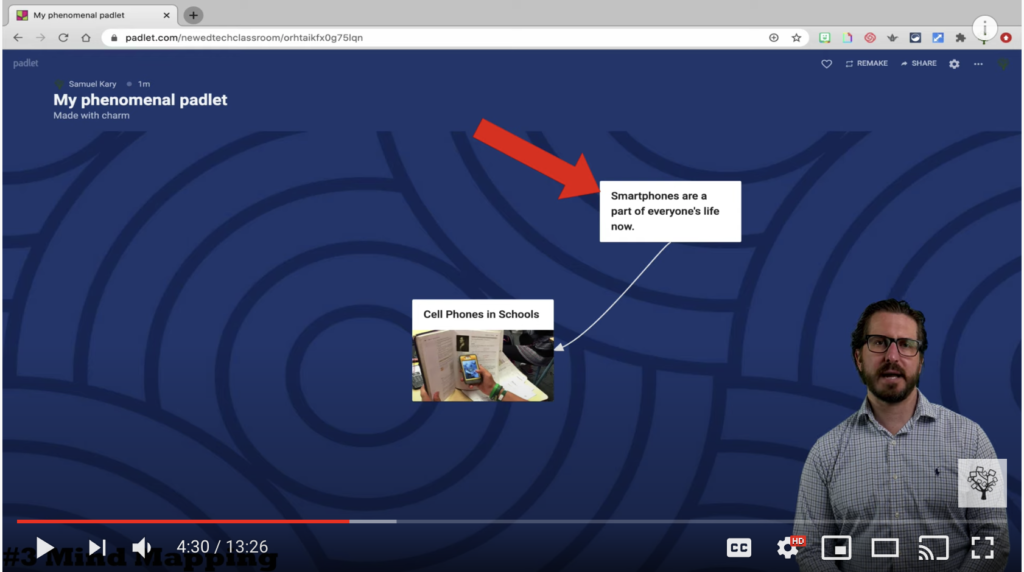
If a student were to put up this post that students should be allowed to use cellphones because they’re already a part of everyday life, and then another student wanted to elaborate on that piece of evidence, they could add another post and then connect their posts together as well.
This mind mapping activity could be done as a whole group, as a small group, or potentially as just an individual activity if a student has their own Padlet account, which they can create for free.
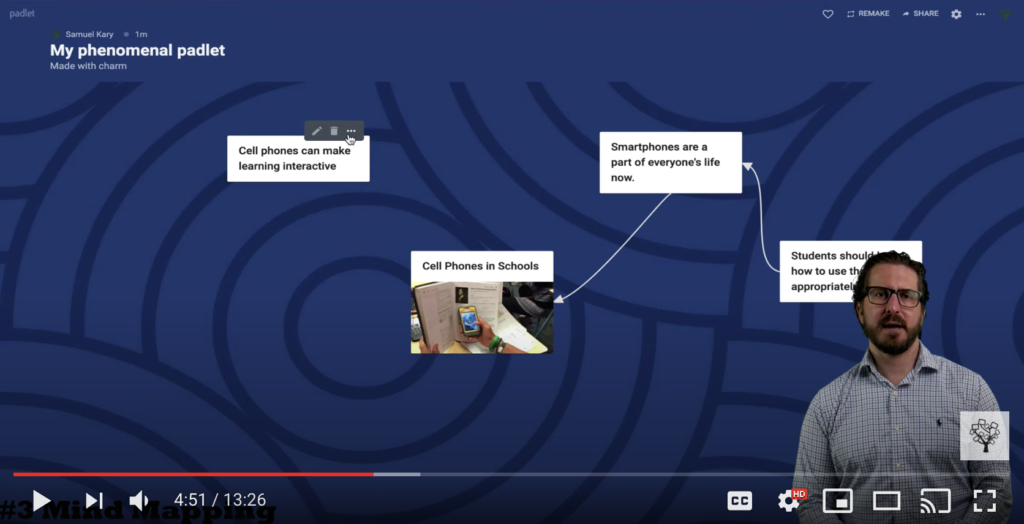
#4: Digital Citizenship in Padlet
For this activity I’d recommend you set up a Shelf board, which you can use to build progressive work spaces in Padlet.
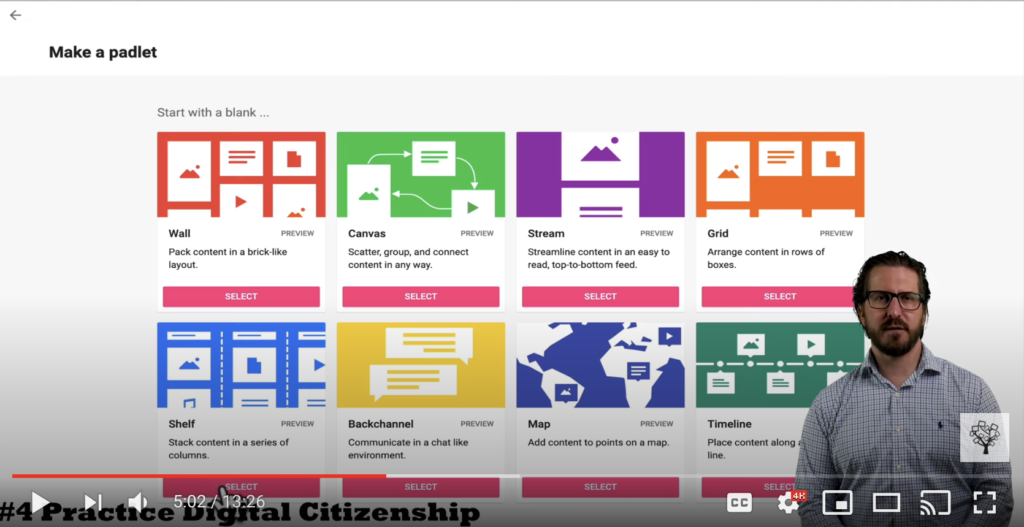
One option for this activity would be to have students analyze different sources for credibility. Source reliability is an important skill for students to practice whenever they’re researching online and you could essentially repeat a similar activity over and over with different topics.
To embed websites in Padlet, use the insert link tool and then copy and paste the website urls so that they show up directly on the bulletin board. Then, students can evaluate each source and leave a comment about whether or not they believe the different sources are reliable.
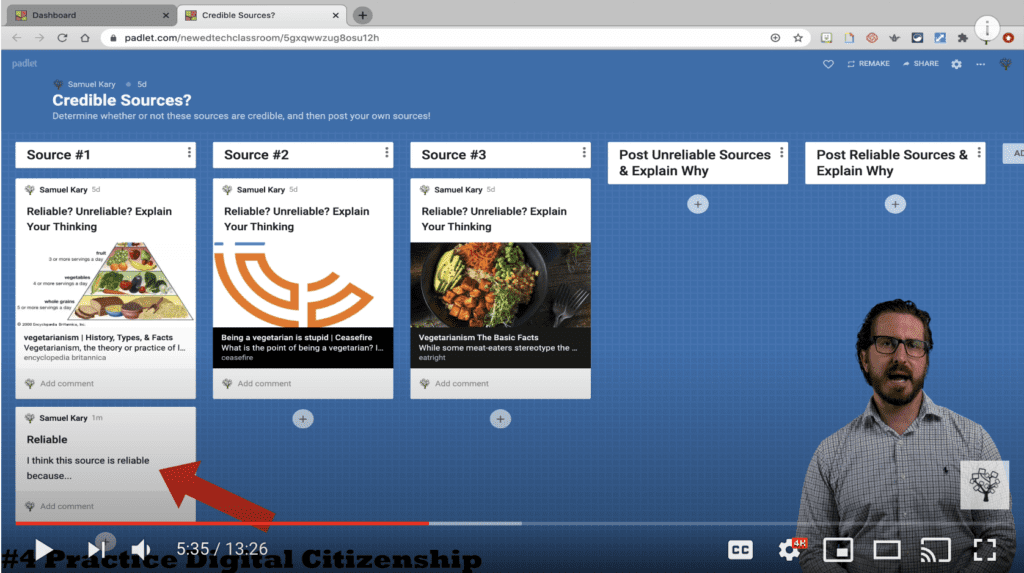
And then as they’re collecting their own sources for the topic that you’re researching, they can start to put those in the relevant column, either saying that they think that they found a source that’s reliable, or that they found one that’s unreliable.
An activity like this will also just help you pull together a bunch of different sources in one place that students could come back to and reference if they need some more information for what they’re researching.
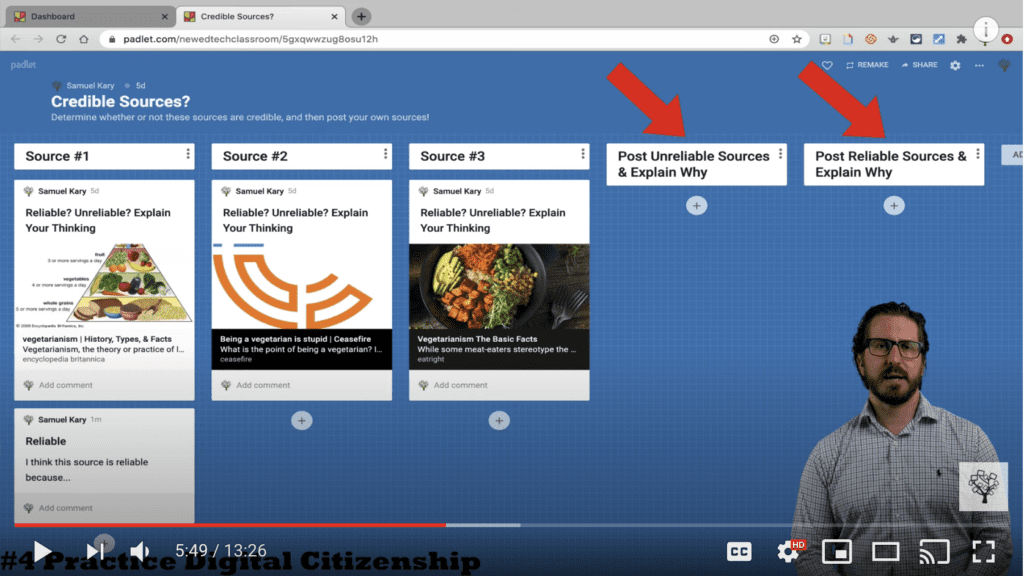
#5: Revise Writing in Padlet
This activity is related to the digital citizenship one, and I would also recommend you use the Shelf board.
Let’s say you were working on adding more variety in our sentence types and you needed to teach students how to write complex sentences. You could use the shelves to set up progressive workspaces that essentially function as scaffolds. The first shelf could include phrases that students would need to build upon in order to complete a complex sentence.
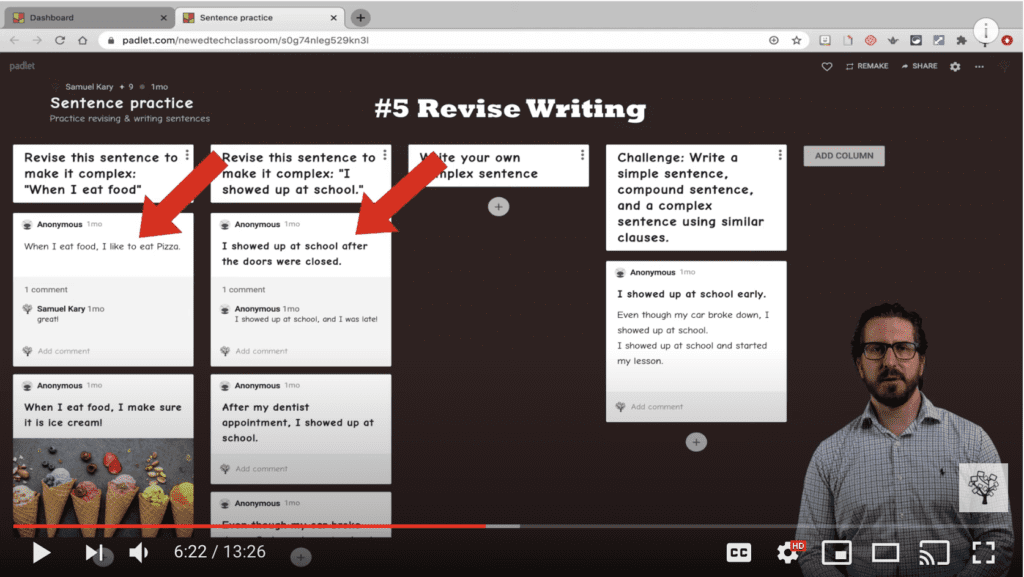
Once students have the hang of the revision process, they can move on to writing their own complex sentences under the columns further to the right.
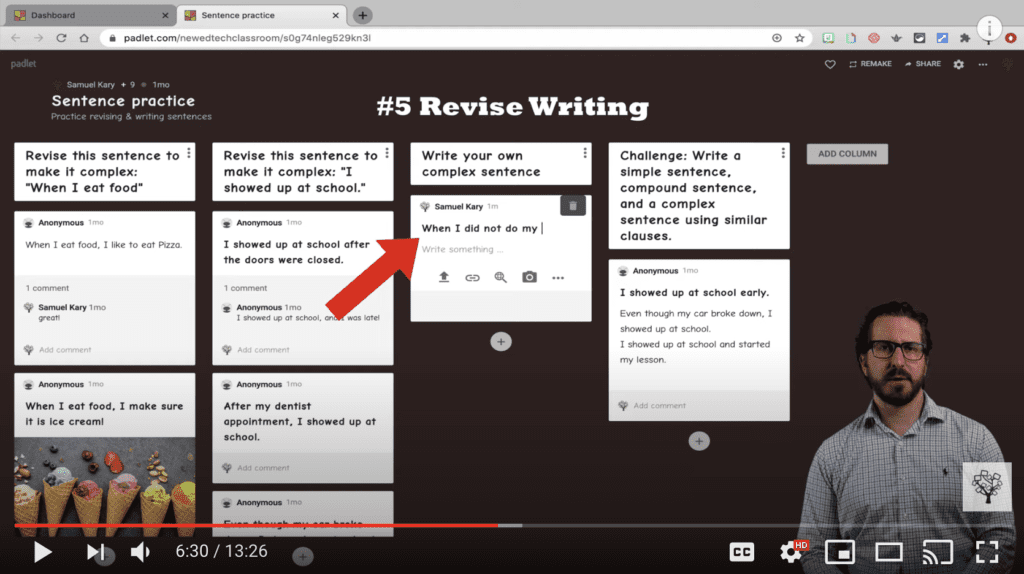
If some students finish while you are still giving feedback, you can also add a challenge activity to the shelf furthest to the right so that students can extend their thinking while still practicing the skill.
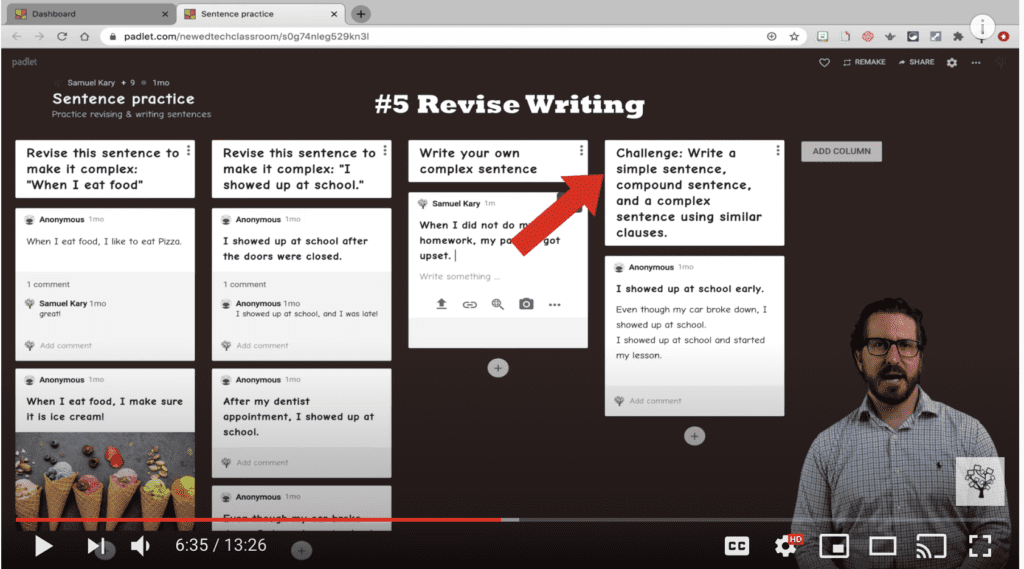
#6: Practice Math Problems in Padlet
Just like with the last two Padlets, you’ll also want to set this one up using the Shelf board. Then, you can use the different shelves to post math problems for students to practice.
If you just wanted students to practice basic math facts that don’t require more advanced math language, you could just type that directly into the column or as a separate post underneath the column.
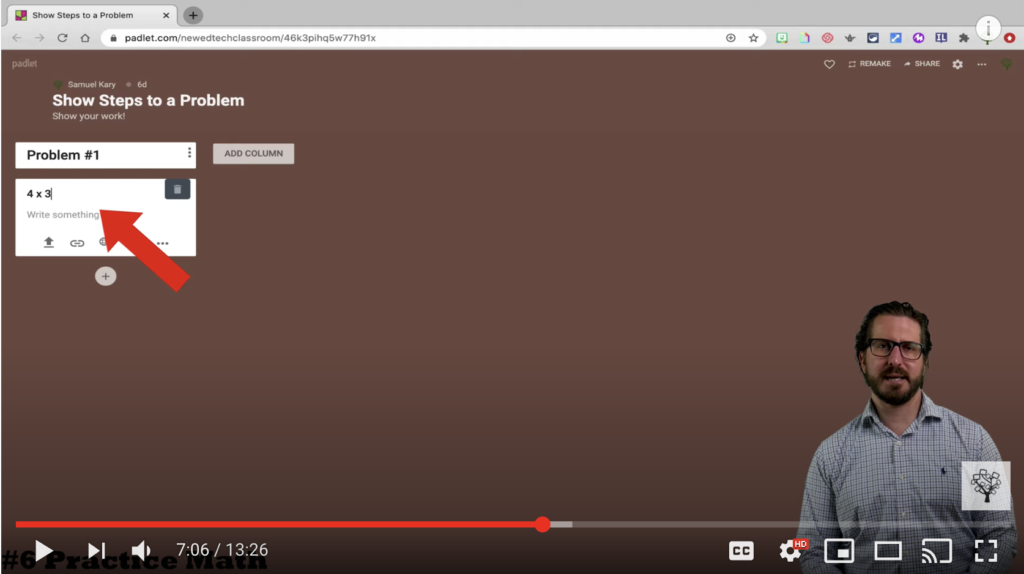
But if you need actual math language, you can use the Hypatia add-on in Google Forms. Once you’ve gotten the add-on it will show up in the drop down add-ons menu. Then, in Google Forms you can open up the math editor and then you can use the math language tools to create the equation that you need.
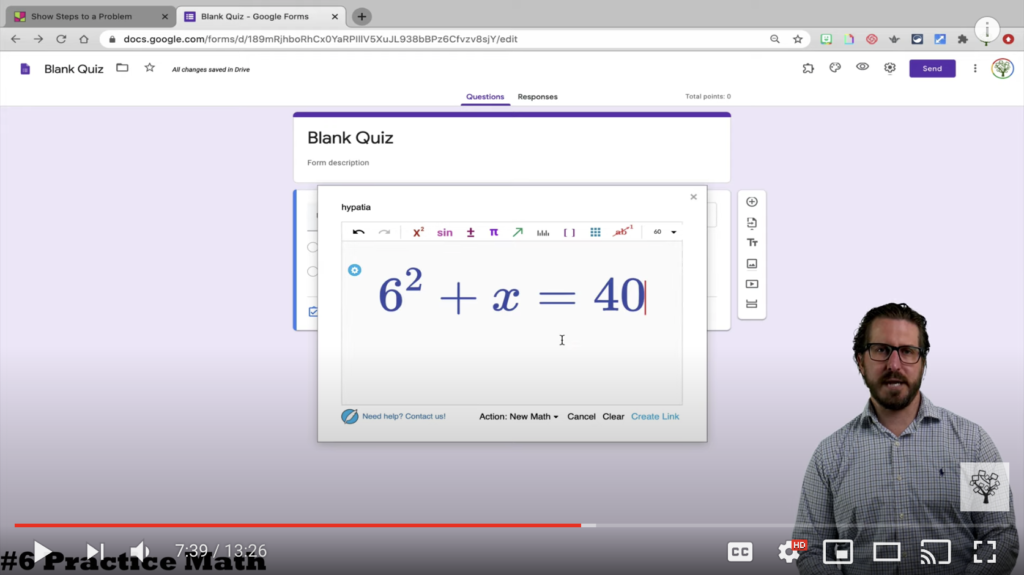
Once you finish creating the equation, it’s actually going to generate a url link that you can copy. You’ll need to copy the link to the math equation you created and then when you return to Padlet, open up the link tool, paste the url, and you’ll see the Hypatia math image show up.
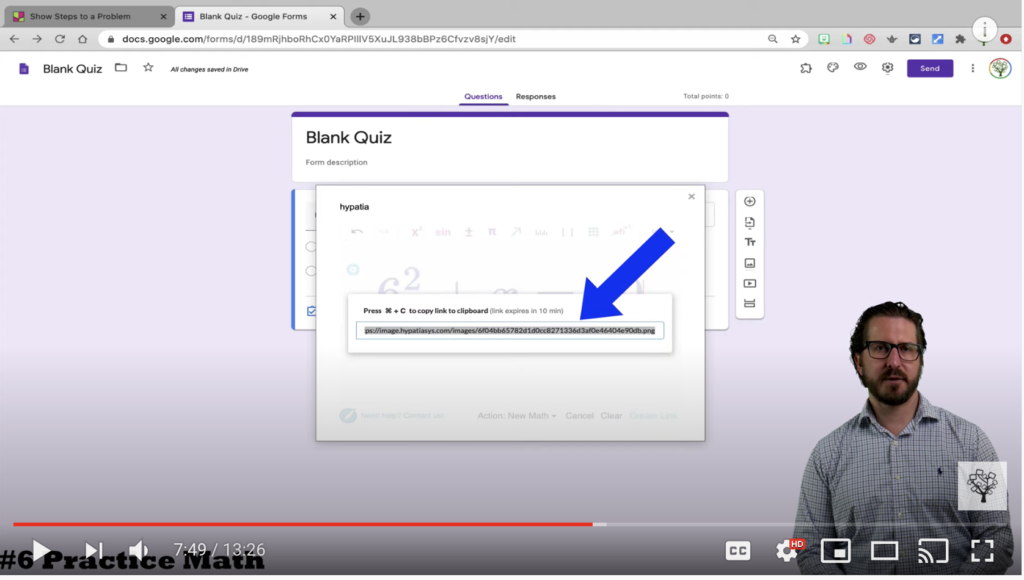
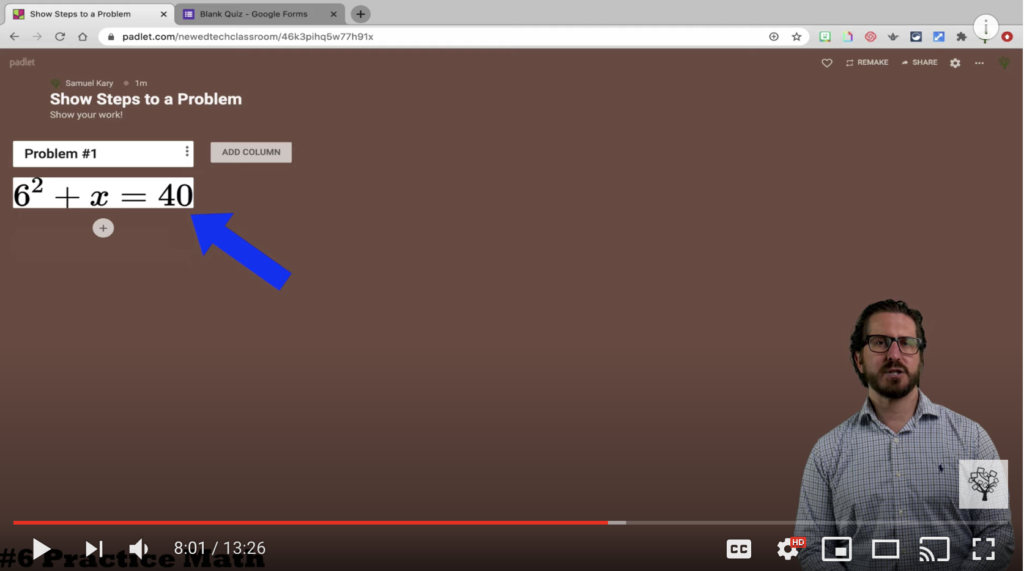
After you posted this equation, you could have students use the drawing tool so they can draw out all the steps to the problem. Here, you might want to change the settings so that you have to approve posts before they show up on the board. That way students won’t be able to see each other’s responses before they post their own answer to the problem.
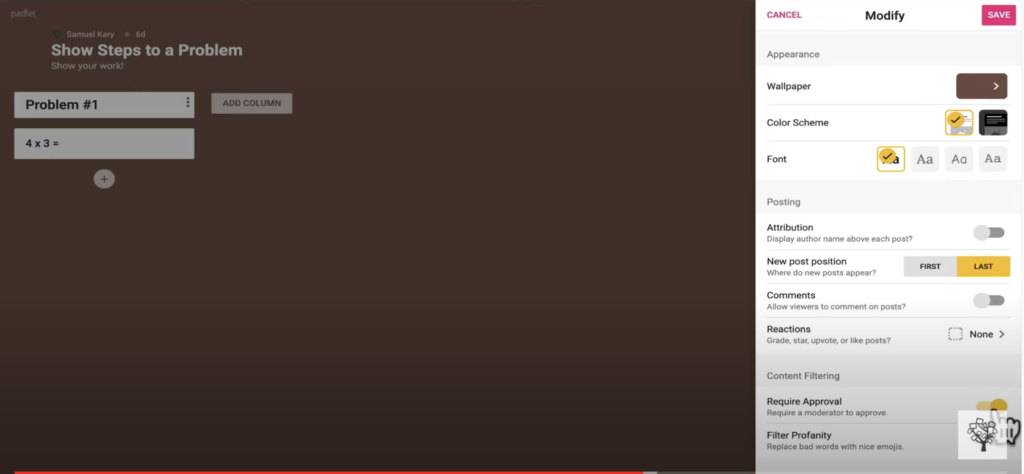
#7: Use Padlet as a Tech Support Board
The purpose of this Padlet board is for students to post screen recordings of issues that they might be having with technology (really any issue related to their computer) so you can better support them. I’d recommend choosing the Wall board for this strategy.
You have different options for how students could bring their screen recordings into Padlet. One would be to use Padlet’s internal screen recording tool. In order to use the screen recorder, students would need to have the Padlet Chrome extension added to their browsers. Often times students are blocked from being able to do this, so you might need to have your tech department push the Padlet extension out to browsers if they’re willing to do that.
If students are able to get the Padlet extension installed, all students will need to do is select the screen record option, and then just like any other screen recorder, they can record a part of their screen and explain an issue they’re having.
If students are unable to get the Padlet extension, they could still record their screens using another tool like Screencastify or Loom and add their recording to the board.
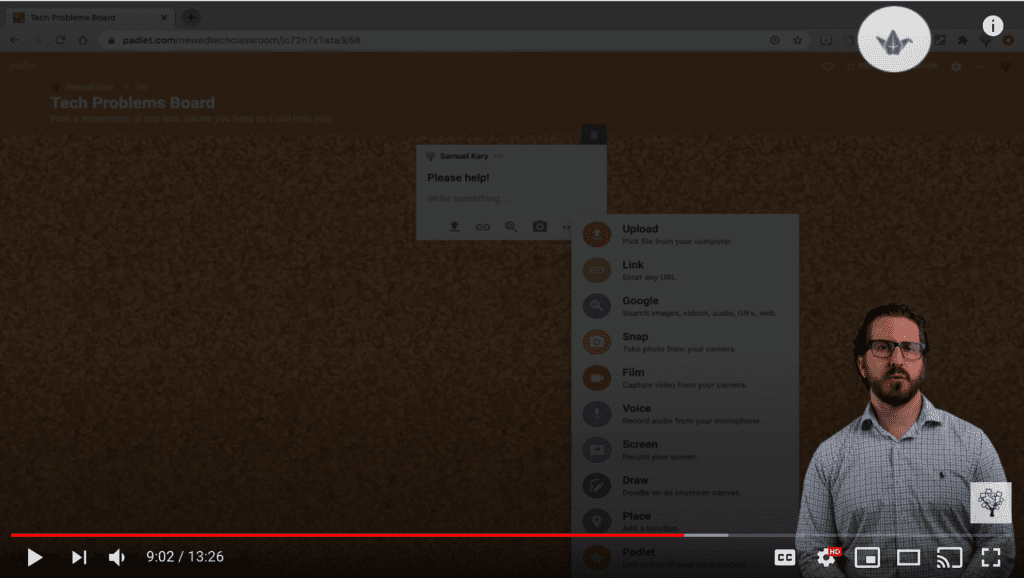
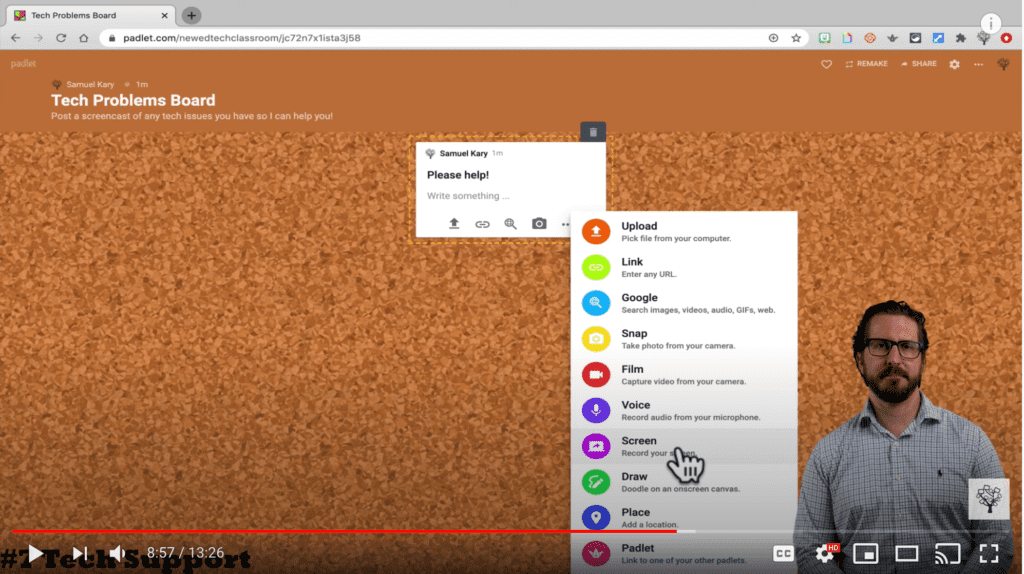
If, for example, a student is having some trouble logging into a Flipgrid assignment, they might record that and explain the issues that they’re having so that you’re able to help them out.
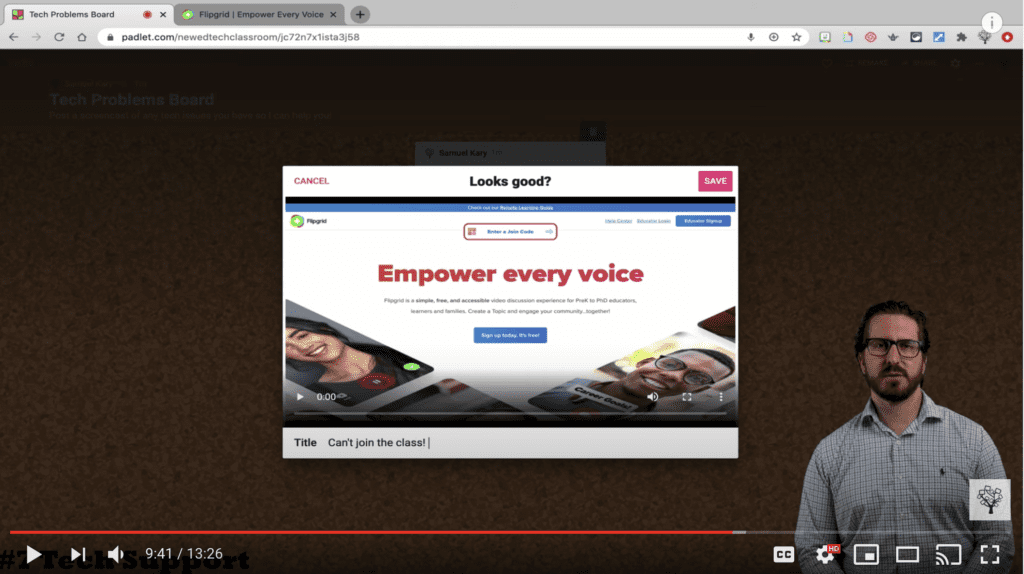
#8: Make Digital Maps in Padlet
Digital map making will work best as a small group collaborative activity or as an individual assignment. When having students create their own Padlet boards, you’ll want to make sure they create their own accounts first.
Here’s a student-facing Padlet tutorial that shows them how to create accounts, as well as how to use Padlet.
To create maps, students will need to select the Map board.
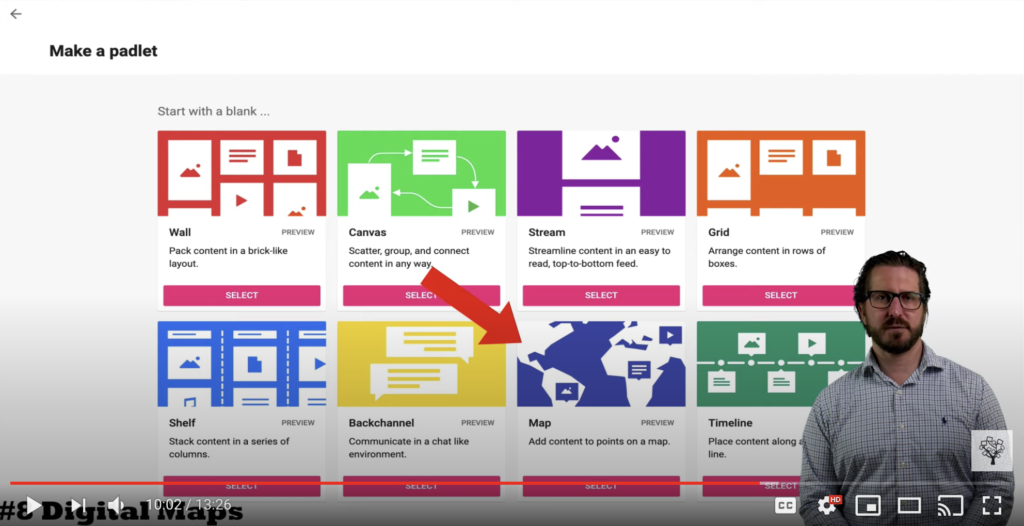
After students select the Map board, they’ll see that there are some different map styles that you can choose from. Once your students have picked a map style, they can create new posts based on specific locations on the map. Students can either drop pins on the map or they can search for a specific location that they’re looking for.
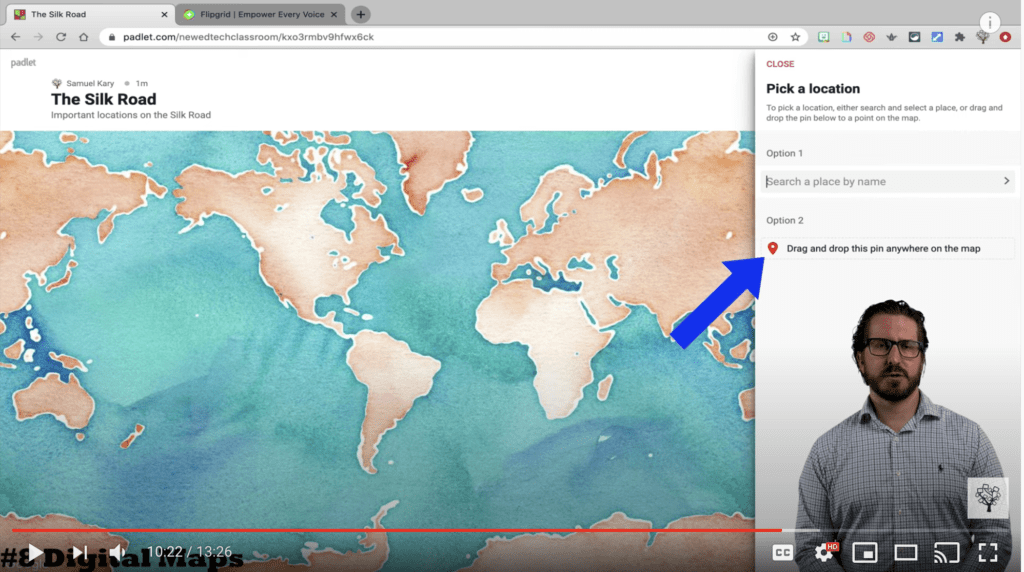
As an example, if you were doing a history project where students were tracking important locations along the Silk Road, students could search for those locations and then write a description about why each place is important.
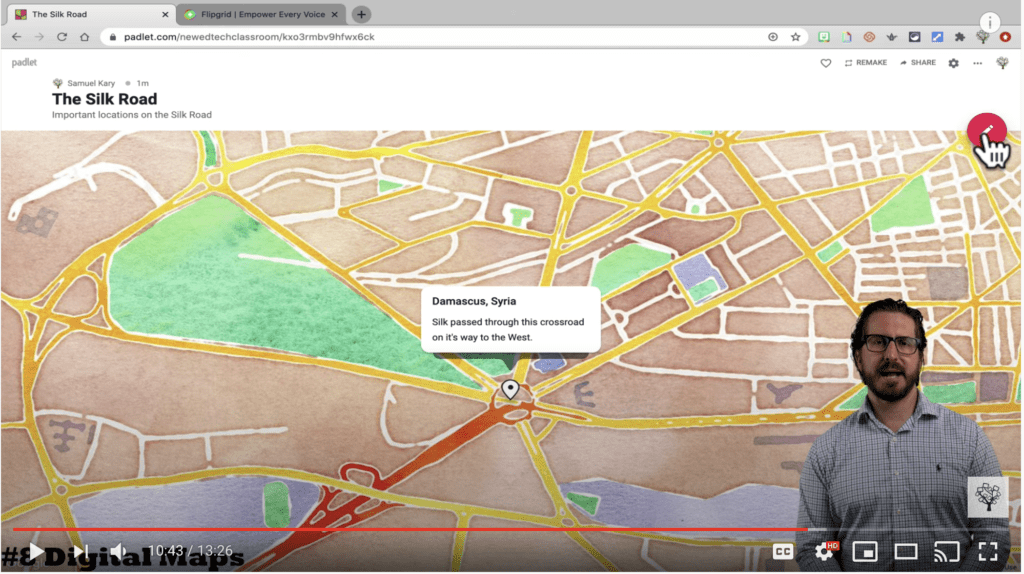
Then students could continue to add new pins on their map, and in addition to text, they could also bring another picture in as a way to supplement what they’re trying to show in the post.
Once students have created more than one pin, they can connect the pins together to show the relationship between places. Here, you can envision how a student could create an entire map with all the important locations of the Silk Road and then string them all together to indicate the trajectory of the trade route.

#9: Make Timelines in Padlet
Just like the map tool, this strategy will also work best if students have their own Padlet accounts. Once they’ve created their accounts, students will need to choose the Timeline board.
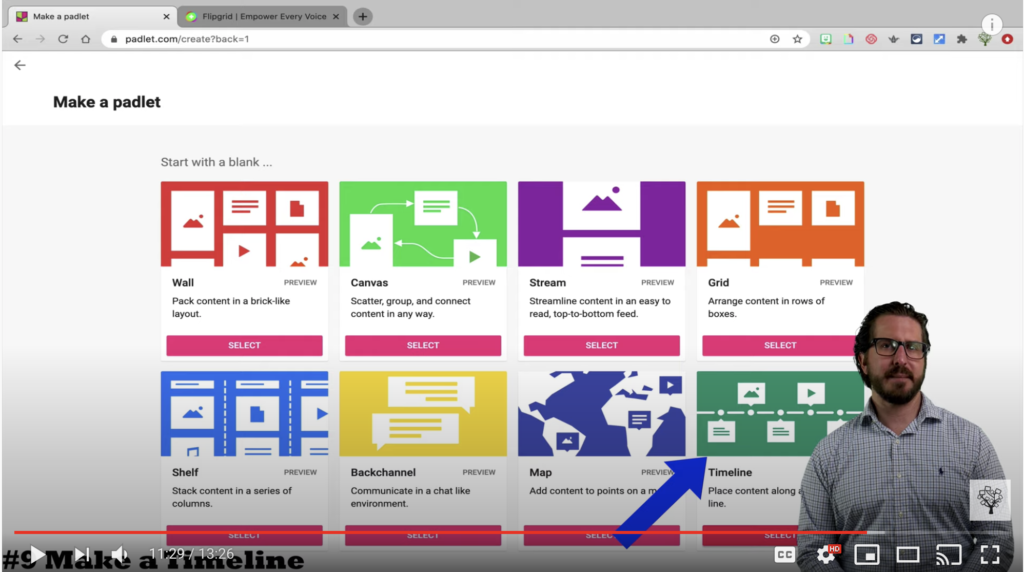
For this activity, students would add posts as different events along a timeline. You could of course have students create academic timelines, though another idea would be to have them create personal-life timelines for community building.
For example, if I were creating my own timeline, I could create a first post with my date and place of birth, as well as add an image as a visual cue. Then I can continue adding different life events by clicking directly on the timeline.
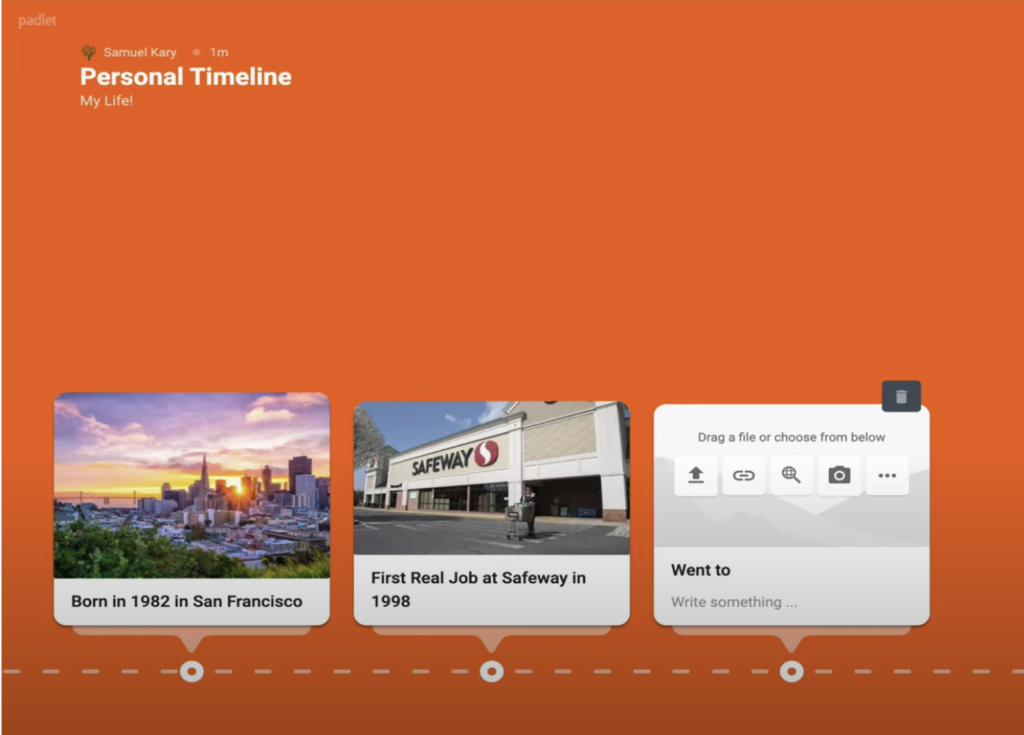
#10: Make Podcast Episodes in Padlet
The 10th idea is to have students make audio recordings for podcast episodes directly in Padlet.
For this idea, I’d recommend setting up a regular wall and having students all post their audio recordings in one place so they can listen to each other’s work.
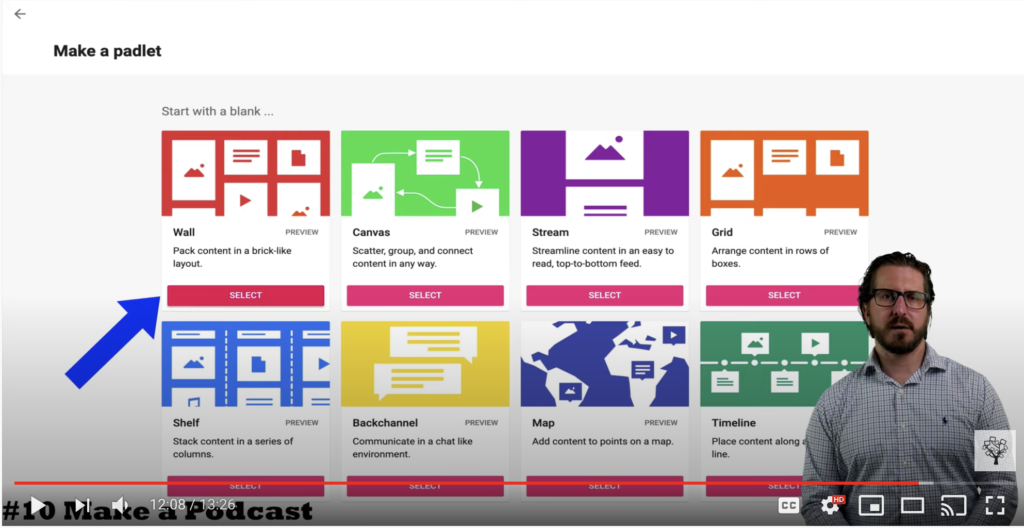
One way you might use podcasting is to have students conduct an interview with a family member about their family history.
Click here to learn more about preparing students for a family interview podcast.
Students could record their conversations directly in Padlet by using the audio recorder tool, and then after they finished their interview, post it so the other students in the class can listen to it and give feedback.
This would be an easy way to introduce students to audio recording and podcasting without needing to also teach students how to use audio recording software.
Conclusion & Resources
Padlet is clearly much more than just an online bulletin board. There are loads of creative ways you can use it with your students, and I’d encourage you to play around with different board and media combinations to see what it can do!
To learn more about the nuts and bolts of teaching with Padlet, click here for a full tutorial and walkthrough!
For additional time-saving tips using technology, check out this other post about Reducing Time Grading by Giving Real-Time Feedback.
And if you’re interested in learning more Gmail Tips for Teachers, be sure to check out this other video!
For additional strategies for how to use technology to personalize learning, increase engagement, foster creativity, and more, click here:
How to Use Education Technology: The Ultimate Guide
And to read more about why I believe technology must be a central part of public education today, click here:
Why Education Technology?: The Ultimate Guide
Interested in the software I use to create my videos? Check out the links below! Many of these products offer a free trial to start and just clicking on the link helps to support The New EdTech Classroom!
Screenflow is a dynamic, intuitive video editing software that I use to create all of my YouTube videos. They’re currently offering a free trial! Get more details here.
I use Adobe Spark Post to design all of my YouTube thumbnails, as well as all my social media graphics. More information here.
If you’re interested in creating a website, these are a couple of programs I personally use and highly recommend: Bluehost is a web host that offers a professional platform for your website. You can check them out here.
Elementor is a powerful tool that helps with clean visual design for your website as well as marketing to further your website’s influence. More details here.

